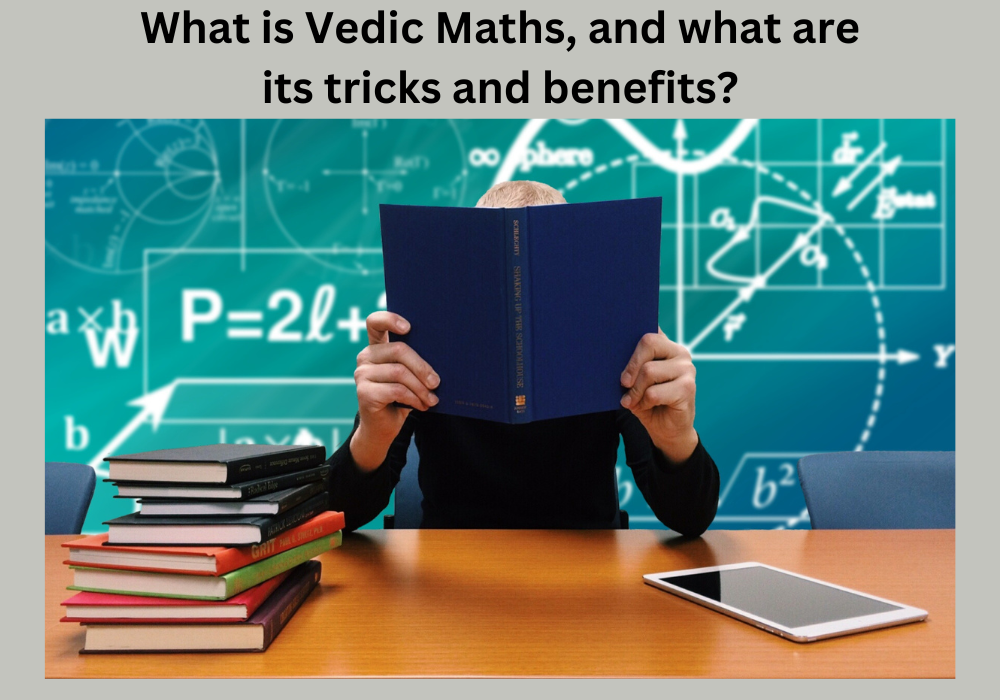Vedic maths is an arrangement that started in old India from the Vedas, old Hindu sacred writings. It includes various numerical procedures and rules that empower quicker and more effective mental estimations in light of 16 sutras (maxims) and 13 sub-sutras (results). Vedic Maths offers techniques for number juggling, polynomial math, calculation, and geometry. It will likely improve numerical activities and upgrade critical thinking abilities by giving simple utilise procedures to estimations. Vedic maths has broad rehearsal and education to work on numerical abilities. It can advance a more profound comprehension of numbers and numerical ideas. It is a very vast topic in itself. Students can take vedic maths classes to learn from tutors and get better in Vedic maths.
Generally, the advantages of Vedic maths range from further developed estimation speed and critical thinking abilities to upgraded certainty. It elevates mental nimbleness and a more profound comprehension of science. It tends to be an essential instrument for understudies, experts, and anybody looking to improve their numerical capacities. The historical backdrop of Vedic maths can be traced back to antiquated India, which started from the Vedas, old Hindu sacred writings going back millennia. The numerical standards and procedures found in the Vedas structure the groundwork of Vedic maths.
The Vedas are an assortment of old texts containing information and shrewdness across different disciplines, including science. Inside these texts, numerical ideas and strategies were framed as sutras (sayings) and sub-sutras (conclusions). These sutras, credited to the antiquated Indian researcher and mathematician Bharati Krishna Tirthaji, are the reason for Vedic maths. Bharati Krishna Tirthaji, otherwise called Master Bharati Krishna Tirtha, was a Hindu priest and researcher who lived from 1884 to 1960.
Benefits of Vedic maths
Vedic maths offers a few advantages for students, everything being equal. Here are a few benefits of rehearsing and carrying out Vedic maths methods:
Speed and Productivity: Vedic maths gives mental estimation methods that empower quicker and more effective calculations. These techniques permit people to rapidly perform complex computations, saving time in tests, rivalries, or daily existence.
Further developed Critical thinking Abilities: Vedic maths encourages a more profound comprehension of numerical ideas and advances scientific reasoning. It outfits students with different systems to approach and tackle issues, improving their critical thinking abilities.
Mental Dexterity and Sharpness: Normal act of Vedic maths practices prepares the brain to be more spry and sharp. It further develops fixation, memory, and general mental readiness, empowering people to handle data more.
Adaptability and Flexibility: Vedic maths procedures apply to different science parts. It includes number juggling, variable-based math, calculation, and geometry. This flexibility permits students to handle various kinds of numerical issues.
Upgraded Numerical Fitness: Customary act of Vedic maths further develops estimation abilities. It also improves by and large numerical inclination. It reinforces mathematical thinking, design acknowledgment, and numerical familiarity.
Fun and Drawing in Learning: Vedic maths procedures are often portrayed through intuitive and connecting with techniques. This makes the growing experience charming for kids and helps foster an uplifting outlook towards math.
Mental Excitement and Mental Health: Vedic maths practices animate the cerebrum and advance its turn of events. The usage of various procedures and methodologies upgrades brain associations and works on general mental capacities.
Tricks in Vedic Maths
Vedic maths utilises various stunts and methods to perform estimations rapidly and productively. Here are a few well-known stunts utilised in Vedic maths:
Digit Total: The digit aggregate procedure includes tracking down the number of digits in a number to improve estimations. For instance, to duplicate 23 by 5, you can add the digits 23 (2 + 3 = 5) and increase the outcome by the other number, giving 5 × 5 = 25.
Base Duplication: This method includes increasing numbers near a base number. For instance, to increase 98 by 97, you can remove 2 from each number (98 – 2 = 96, 97 – 2 = 95) and duplicate the outcomes, giving 96 × 95 = 9,120.
Ekadhikena Purvena: This standard is utilised to increase a number by 11. To apply this stunt, add the neighbouring digits of the first number and spot the aggregate between them. For instance, 24 × 11 = 2 (2 + 4) 4 = 264.
Nikhilam Increase: This strategy is utilised for duplication when the numbers are near a base number and the distinctions from the base are similar. Deduct the base from each number, increase the distinctions, and add the outcome to the square of the base. For instance, to duplicate 103 by 97, deduct 100 from each number (103 – 100 = 3, 97 – 100 = – 3), increase the distinctions (3 × – 3 = – 9), and add it to the square of the base (100 × 100 = 10,000), giving 10,000 – 9 = 9,991.
The framework envelops many techniques for various estimations, giving accessible routes and disentanglements to perform numerical tasks all the more effectively and productively. To learn Vedic maths from educators, students can take help from online tutoring services for better understanding. Tutors can make learning easy and effective.

